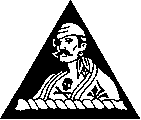This was a night mining mission involving 27 planes from the 6th Bomb Group:
Other missions flown in this period were to the Korean ports of Rashin,
Seishan, Gensan and Fusan and to the Jap ports of Fushiki, Nanao and
Niigata. * * *
The Rashin mining missions were the longest missions flown by any
aircraft in the war. The mine fields were 2050 nautical miles from the
home base on Tinian. On the first mission to Rashin on 11 July one
B-29 flew the entire 4100 miles non-stop and landed at North Field 19 hours
and 40 minutes after takeoff. This was undoubtedly the longest
non-stop mission of the war. Other aircraft flew the mission with a
stop at Iwo Jima for refueling either on the trip to Korea or on the return
flight. Initial points on these missions were sixty miles south of
Vladivastok, Siberia, and involved six hours of flight over the Empire.
[Pirate's Log, p. 49]
According to the Distinguished Unit Citation:
The 6th Bombardment Group again took off on the night of 11 July 1945 to
open a new phase of the attack on the enemy's shipping. Traversing
vast expanses of water, exposed for seven hours and ten minutes over enemy
territory on one of the longest missions of the war, and heavily loaded with
mines, the group flew to the remote shores of Korea to mine the harbors of
Rashin and Fusan. Although handicapped by a solid undercast at the
target area, and entirely dependent upon radar, the operation was executed
with such unerring precision and pressed with such determination that radar
scope photos again revealed ninety percent of the mines were sown in the
briefed area.
According to the DFC Citation for Crew #4012:
For extraordinary achievement while participating in
aerial flight 11 July 1945. These individuals were combat crew members of a
B-29 aircraft on a mine laying mission to Rashin, on the north eastern coast
of Korea. This mission was flown from bases in the Marianas and return for
an over all distance of approximately 4400 miles. Many difficulties and
dangers overcome on this operation included complex navigational problems
involved in such a long over water mission; making landfall at the planned
time and place on the Korean coast; achieving a precise mine-laying run in
the face of unfavorable weather conditions and difficult terrain; the great
strain resulting from the long flying time involved; the possibility of
encountering determined enemy opposition while twice traversing the main
islands of Japan; and the danger of being forced far out to sea. Throughout
this difficult and gruelling mission each member of this crew performed his
assigned duties with such outstanding skill and devotion to duty that the
entire operation was accomplished as planned and the mines released in the
exact area where they would most effectively block shipping. The coolness,
courage and determination shown in accomplishment of this long and hazardous
mission by these veterans of repeated assaults against the Japanese homeland
reflect great credit on themselves and the Army Air Forces.
First Lieutenant EDGAR L. VINCENT as Airplane Commander
First Lieutenant WILLIAM G. SPELLMAN as Navigator
First Lieutenant HERBERT C. HORST as Bombardier
Staff Sergeant WALTER H. STULL as Radar Gunner
Staff Sergeant JOSEPH N. ROTONDI as Radio Operator
Technical Sergeant LEON L. STEWARD as Central Fire Control Gunner
Staff Sergeant NATHANIEL B. CLARK as Left Blister Gunner
Staff Sergeant GORDON P. BRANTMAN as Right Blister Gunner
Sergeant LOUIS L. CHICQUETTE as Tail Gunner
[Transcribed by David Wilson, son of Sgt Bernard E. Wilson (Gunner, "Anonymous IV")]
|

